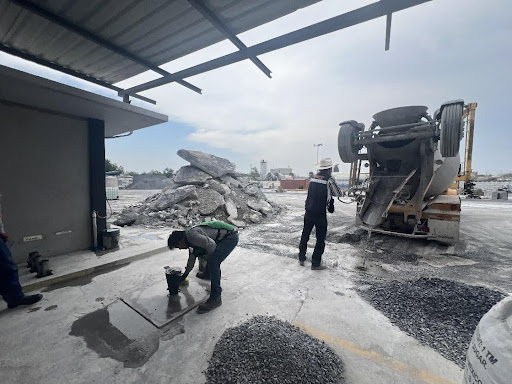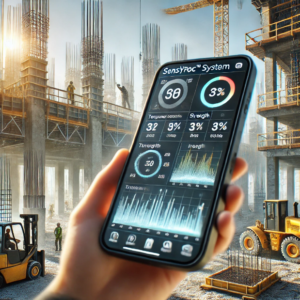Optimizing Material Use in Concrete Construction: How SensyRoc™ Sensors Slash Costs and Reduce Waste
Developer
October 4, 2024

Introduction
The construction industry is known for its efficiency challenges, particularly regarding waste generation. In almost every project, a standard 10% contingency is set aside to cover waste, reflecting the industry’s struggle with material inefficiency. The concrete sector is a prime example, where ready-mix producers and precasters often add extra Portland cement to their mixes to ensure rapid strength gain. While this practice helps meet demand, it also drives up costs and increases waste.
The Problem with Traditional Concrete Testing
Traditional concrete testing methods contribute significantly to this inefficiency. These methods require concrete samples to be cast in plastic molds and transported to labs for compressive strength testing. The process is not only labor-intensive and costly but also environmentally unfriendly. The molds and tested cylinders are typically discarded after testing, generating a considerable amount of waste. Moreover, the frequent transportation of these specimens to labs results in substantial CO2 emissions.
SensyRoc™: A Game-Changer in Concrete Construction
SensyRoc™ sensors are revolutionizing the way concrete is tested and optimized in construction projects. By deploying these smart sensors, construction companies can cut their concrete testing costs by up to 50% and dramatically reduce waste. SensyRoc™ sensors provide real-time data on concrete performance, allowing users to fine-tune their mixes and avoid the unnecessary addition of Portland cement. Even a modest 5% reduction in cement usage per batch can significantly boost profitability while lowering environmental impact, especially considering that cement production is the second-largest source of CO2 emissions worldwide.
Real-Time Data for Better Decision-Making
One of the most significant advantages of SensyRoc™ sensors is their ability to provide real-time data analytics. This capability enables users to make informed decisions quickly, reducing the risk of low breaks caused by mishandling and minimizing construction downtime. With precise, real-time data at their fingertips, project managers can optimize concrete mix designs with confidence, leading to more efficient and sustainable construction practices.
The Benefits of SensyRoc™ Sensors
- Cost Reduction: By optimizing cement usage, SensyRoc™ helps companies reduce material costs significantly, enhancing overall profitability.
- Waste Minimization: The sensors reduce the need for excess cement and eliminate the waste associated with traditional testing methods.
- Environmental Sustainability: Lower cement usage and reduced CO2 emissions contribute to a greener, more sustainable construction industry.
- Increased Efficiency: Real-time data allows for quicker decision-making, reducing construction delays and improving overall project timelines.
Conclusion

All in all, SensyRoc™ sensors are empowering the concrete industry to adopt smarter, more sustainable practices. By cutting costs, reducing waste, and minimizing environmental impact, SensyRoc™ is leading the charge toward a more efficient and responsible construction industry.

